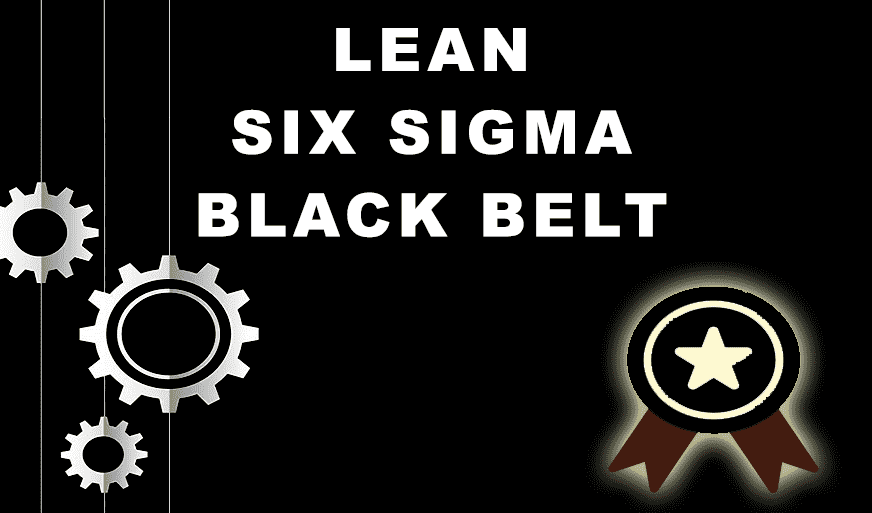Quality Control Explained – Six Sigma
-
 By Melisa
By Melisa - Published on Feb 21 2024

Table of Contents
Introduction to Quality Control – Analysis, Approaches and Methods
When we think of quality control, the first thing that comes to our mind is a checking procedure that will eliminate all defects from a product. Well, that’s right to some extent, but quality control is much more than that.
Quality control pertains to a set of processes that will ensure that a given product is complying with the requirements of the customer. What do customers want? The answer is simple, and customers seek functionality with quality.
A product that has better quality will perform well in the market than a product that has low quality. Quality control is not a single step and requires several sets of procedures to be accomplished.
What is Quality Control?
Quality control can be defined as a set of processes that a company follows to ensure that its products are meeting customer requirements. A major misconception regarding quality control is that only large organizations follow the principles of quality control.
This is a wrong notion as smaller companies must also focus on quality control as it will immensely boost the growth of their organization. The quality control label is attached to a product after its quality has been checked.
If the product does not meet standard norms after a quality check, it is sent for revaluation and the process of manufacturing is revised.
What is Quality Assurance?
Quality assurance is another aspect of quality control. Often quality control and quality assurance are confused with one another. That is completely wrong because quality control and quality analysis are completely different things.
Quality assurance can be seen as the theoretical aspect of quality control. In essence, quality assurance frames the guidelines that need to be followed by doing a quality control assessment, whereas quality control involves doing those things in practice.
Though both are similar in their purpose, the methods are not the same. Quality control and quality assurance can be seen as two sides of the same coin as their result are to ensure that the product is meeting the necessary rules and regulations.
Quality assurance and quality control are sometimes considered the same and are usually written as QA/QC.
What are the Aspects of Quality Control?
There are three standard aspects or guidelines for quality control. The quality control description and aspects are as follows.
Well managed processes
A product with the highest quality is through a well-managed process. It makes the overall job of quality control easier because they already comply with the customer requirements.
This is to ensure that the processes involved with the manufacturing of the product are up to the mark. Any shift in the procedure can result in unforeseen situations that must be avoided.
Possession of skills by the Quality control technician
The quality control technician must ensure that the product has quality by ensuring that it is following the guidelines set for it. A quality control technician applies the knowledge from the skills learned, experience gained, and knowledge possessed.
One is ineligible to become a quality control coordinator or technician without the necessary skills.
Focusing on soft skills
Soft skills are crucial for every organization, be it interpersonal communications instilling a sense of team spirit, soft skills are important for the overall procedure of quality control.
It enhances the person’s capabilities with better equipped to manage the activities of the quality control procedure.
With the various aspects of quality control
When these aspects are kept in mind, quality control becomes a manageable task. Without these aspects, you would be doing a dummy quality test to just keep it in the records.
Quality control inspectors have a tough time keeping quality products as all of the above aspects might not be present at the same time.
Even if a single aspect is missing, it can ruin the entire process of quality control checks.
Origin of Quality Control
Quality control is not a modern term. It has been around for a very long time. You would be surprised to know that the earliest incidents of quality control check data back as old as the 19th century!
Early tools designers were known to check the tool's functionality before setting out to use them or make them available to the user. Maybe that’s how the concept of quality control originated.
In the earlier days, quality control was used to identify defects based on accept or reject method. Sketches of an ideal tool were drawn.
The finished products were compared to the sketches. If they matched the sketch, they were accepted, and if not, they were rejected. This simple concept has grown manifold to emerge as a full-blown quality control analysis.
History of Quality
The quality control procedures of today are more sophisticated and use modern technology. AI and IT have made it possible to utilize the resources to apply effective quality control measures to processes.
Also, the principles of quality control have changed. Earlier, quality control only took into account the physical appearance of a product.
But, nowadays, people are strictly monitoring the functionality, recycling, disposal, and design of the product to determine the quality control procedures.

All these things work together to ensure that the defect rate is significantly reduced. Quality control measures have also been used for stabilizing production.
Different Approaches to Quality Control Measures
There have been different approaches to quality control. Most of the approaches have the same theme but are different in a way or two. A few of those approaches have found widespread acceptance across the globe.
Let’s take a look at some of the most accepted quality control approaches followed by people around the globe.
1) SQC - Statistical Quality Control
This has been around since the early 1930s. A statistical method is adopted in this approach that uses charts and samples to check the quality of the product.
2) TQC - Total Quality Control
Popular in use since 1956, the TQC approach, essential for quality control in business, has been revolutionized at Harvard Business School. It emphasizes the importance of marketing, accounting, sales, and human resources. This was the first method that broke down the different elements of quality control measures.

3) SPC - Statistical Process Control
Statistical Process Control focuses on individual processes and uses feedback to regulate the process of quality control.
4) CWQC - Company-Wide Quality control
Invented in Japan, this method of quality control has led to the growth of some of the most recognized motor companies in Japan.
5) TQM - Total Quality Management
This is relatively new and first came to use in 1985. It aimed for continuous organizational improvement and was used for the US defense quality control system.
Six Sigma
The most popular quality control method, Six Sigma, including quality control in Six Sigma, was conceptualized by Motorola to enhance its manufacturing processes. It utilized a statistical approach combined with an analytical one.
Lean Six Sigma
This is the latest quality control method and has been around for the past two decades. It focuses on removing wastage and defects from the manufacturing process so that time and money of companies would be saved.
Examples of Quality Control
To understand Quality control in Six Sigma in a better way, let’s take a look at some quality control examples across various industries.
Food Industry
In the food industry, the main aim of quality control food checks is to determine what the food product is going to taste like. It is also tested for toxicity or allergic reactions.
If the test subject develops serious ailments after consuming the product, it is discarded, and the other products are scrutinized properly.
Pharmaceuticals
This is a sensitive industry, so the products have to be examined very carefully. The quality control methods follow a stringent set of guidelines to ensure the medicines and products are safe to consume.
Biotech quality control is used to regulate different pharmaceuticals. The sole purpose of medicines is to treat people, if a medicine makes someone sicker, it is unfit for use.
Quality control chemists are in high demand because their roles are some of the trickiest roles in quality control methods. The salary of a quality control chemist is high paying.
Automobile Industry
Automobiles like cars, bikes, or trucks have to be sent through quality control measures to ensure that the parts are functioning properly. They are also tested for fuel efficiency.
Electronics
For electrical equipment, quality control might be done to ensure that there are no short circuits or harmful effects of using the electrical appliance.
The importance of quality control in business is emerging slowly to take over the roles of regular and unprofessional quality controllers.
Quality Control Techniques
Every organization has different quality control techniques. Several parameters need to be considered while performing a quality control analysis. Charts, samples, data, or feedback are used to simplify the process of quality control.
Often, a specific attribute is given more importance during the process of quality control. This leads to ignorance of other areas.
For a comprehensive and holistic quality control approach, efforts must be made to take into account all the aspects of quality control.
Project Quality Control Chart
Quality control charts are used to determine whether the products are meeting their requirements or not. The degree of variation is also noted as that would help the organizations figure out where they are lacking in the following ways:
- A quality control coordinator oversees all processes to ensure proper order. In the context of project quality control, preparing a quality control checklist becomes crucial to identify potential issues. Alongside, a quality control flow chart and quality control form template offer additional tools for thorough quality control analysis.
- When a chart focuses on a single aspect of the product; for example, the fuel efficiency of an engine, it is known as a univariate chart. If the chart focuses on multiple aspects, then it is known as a multivariate chart. The selection of samples for quality control tests is made on a purely random basis.
- Quality control inspectors go around and pick any sample they want. The sample is then made to pass through quality control analysis. This is done by a quality control analyst who will check the product for the said aspects to check criteria and discard decision-making.
- Another form of quality control technique is creating a bar chart. In a bar chart, a graph is prepared. On the two axes of the graph, certain attributes are written down. After writing the attributes, they are tested for their quality, and a bar is drawn to test the variance. If the variance is high, the products are deemed unfit for use.
- The Taguchi Method: A unique method in which importance is given to the design and development of the product. Rather than focusing on the result and then performing the quality control tests, the Taguchi method focuses on quality control right from the initial phases of design.
This limits the number of potential defects in the product after completing the manufacturing process. This method mainly aims to reduce the variance during the quality control analysis process.
Role of a Quality Control Inspector
A quality control inspector is a high post for a quality control employee. They can be aided by a quality control assistant or quality control associate. The role of a quality control inspector is to identify the defects in products and send them to a quality control analyst who will detect the defects might.
Identifying physical defects is the role of an inspector, and the sub-physical quality control is done by the analyst. If plenty of issues are found with the product during the inspection, the quality control inspector sends the product back for repair.
If a defect is beyond repair, the inspector discards the product and revises the process of manufacturing.
Roles of Quality Control and Inspection
There are quality control supervisors, too, who are responsible for the overall process of quality control. Their job is crucial for the growth of the company as they have to ensure that the product reaching the consumers is free from defects.
Quality control duties are not easy and need to be carried out with utmost dedication.
Importance of Quality Control
Extreme levels of competition across all industries are forcing organizations to create the best products for their customers. Customers have become aware of the services they deserve and will not tolerate sub-standard products or services.
To meet with the burdensome consumer demands with quality products and various budgets, companies have to adopt stringent quality control measures to ensure that their products are defect-free and up to the mark.
For this reason, quality control becomes even more important. Quality control jobs across the world give lucrative salaries and are pursued by many people. Certain companies have their quality control book in which they have a detailed explanation of the procedures of quality control.
Effective utilization of resources can be done if the quality of products is regulated. It would also lead to a reduction in cost and the improvement of the company's profitability. Smaller companies think that the quality control process is a waste of time and investment.
Therefore, they repeat their mistakes and produce batch after batch of defective products. If they start investing in quality control, they can acquire a larger customer base and boost their growth.
Quality control doesn’t only refer to the repairing of defects. The word control in quality control ensures that the manufacturing processes are revised properly after a defective product is found. Controlling the processes would go a long way in ensuring that future defects are not found.
Steps of Quality Control Analysis
It is imperative to understand that the term quality is a relative aspect and can change according to the pattern of use by the customers.
For effective quality control, certain steps must be followed. Some of those steps are listed below:
Preparing a detailed guideline on what the product must be like once it has been manufactured. The guidelines need to be followed to ensure that each process of manufacturing is following the norms of quality control.
- Standard measurements need to be outlined to avoid confusion during the quality control process. All the measurement metrics must be uniform and adjusted at the same level.
- Deviations from the pre-set quality control standards must be noted down in charts or graphs. This would help you to visualize the defects and variations. This process is followed by most organizations, as it is quick and effective.
- Costs of the manufacturing process must be kept in mind to ensure that the end product is meeting budgetary quality control standards. After this, a product can be analyzed for defects. If budgets are overrun, it will lead to losses and a decrease in profitability.
- Weaknesses in the manufacturing process need to be identified and eliminated to prevent the occurrence of future defects.
Quality Control Jobs Scope
A quality control job is high paying and has been preferred by many people. Before applying for a quality control job, a candidate must possess a relevant quality control degree. If you are interested in applying for a job in quality control, you need to have the necessary quality control document with you.
One of the best quality control degrees is the Lean Six Sigma certification which is preferred by recruiters across the world to hire a quality control engineer. The salary of a quality control engineer is one of the highest in the corporate sector.
The prerequisite for a job in this sector is previous quality control experience. A person having some knowledge of handling quality control data can easily handle quality control engineer jobs. A quality control engineer's job description is vast. From looking over manufacturing processes to ensuring that a product is defect-free, each aspect must be overseen by the quality control engineer.
The role of a quality control engineer is different from that of an analyst. An analyst will only figure out what the problem is, but an engineer has to fix those defects.
The engineer has to implement quality control best practices to ensure that the product complies with stringent quality control norms.
List of Important Quality Control Jobs
Here are some quality control jobs to keep up with,
Quality Control Analyst
An analyst has to process the collected data to find out where the problem lies. Statistical techniques are used by an analyst to check for defects. The annual salary of a quality control analyst is $69,986.
Quality Control Associate
It is not a full-fledged job, and usually, some of the other workers of the organization double up as quality control associates. Their annual salaries are around $59,036.
Quality Control Auditor
Focused on managing the budgeting of manufacturing processes, a quality control system auditor ensures proper execution of system audits. The average annual salary of an auditor ranges from $79,264 to $71,555.
Quality Control Technician
For the electrical and mechanical needs of the quality control process, a technician is employed. The role of the technician is to make sure that the equipment is in proper condition. Their salary is around $55,000.
Quality Control Consultant
This is mainly about the soft skills of the quality control process. Advising and providing consultation is the key role of a quality control consultant.
Expertise in quality control techniques is a must-have to excel in this job. The average annual salary of a quality control consultant is around $118,541.
Quality Control Coordinator
A quality control coordinator has to make sure that the process of quality control is thoroughly monitored. This would ensure that the end products are defect-free. The average annual salary of a quality control coordinator is $58,000.
Quality Control Director
This is a high-paying job and takes into account all the attributes of quality control mechanisms. A quality control director has to devise plans to improve the quality of products.
Facilitating the repairing works and creating innovative plans are the roles of the coordinator. The average annual salary of a quality control coordinator is around $130,000.
Quality Control Instructor
An instructor is concerned with the teaching aspect of quality control methodologies. Training other people on quality control mechanisms is the main goal of an instructor. The average annual salary of a quality control instructor is $101,300.
Quality Control Manager
A manager controls the administrative department of quality control. He/she has to deal with the stakeholders and consumers to address quality control issues. The average annual salary of a quality control inspector is around $93,500.
Quality Control Master Black Belt
This is a job role for candidates with Six Sigma master black belt certification. It will allow an individual to get employed in the topmost post of quality control management.
Utilizing the six sigma quality control tools for enhancing the quality of services and products is the primary responsibility of a quality control master black belt professional. Quality control in Six Sigma ensures that processes are optimized for quality and efficiency. The average annual salary of a quality control master black belt professional is $125,200.
Quality Control Project Engineer
A quality control project engineer might also be referred to as a quality control CEO or a quality control coach.
He/she has to look over the quality control department and regulate its processes. Achieving quality control goals plays a key role in the quality control project engineer.
Suggested Read - Six Sigma Black Belt Certification Value & Career Benefits
Quality Control Specialist
A quality control specialist has a specific role within the organization and has to oversee all quality-related functions. A quality control specialist has expertise in handling all aspects of quality testing and integrates quality control graphics to advise the quality control, group members.
Forming a quality control group for a specific attribute is also the role of a quality control specialist.
Quality Control Statistician
A quality control statistician uses statistical techniques to design and test quality control methods. Sending quality reports in the form of quality control emails is an important role of a quality control statistician.
Top Quality Management Certification - Lean Six Sigma Black Belt
Quality Control Executive
A quality control executive implements the best practices in an organization’s quality control processes and issues regulations for the administration of quality control measures. Continuous improvement is one of the main goals of a quality control executive.
Conclusion
Quality control has been gaining momentum because it helps companies achieve the desired goals by staying within their budgets. A quality control analysis will make a company grow by removing the defects from the products they deliver.
A defect-free product will ensure that customers are satisfied with the product. If you want to build a career in quality control, getting certified would be the best start for you.
Many quality control certifications cater to the needs of organizations. Possessing a quality control certification is beneficial as recruiters will get an idea of your capabilities. Having a certification would boost your career as a quality control professional.
One of the most popular quality control certifications is the Six Sigma certification. It is a highly advanced method that integrates rigorous policies to ensure that the products being delivered to customers are free from defects. Implementing quality control in Six Sigma, this certification emphasizes stringent measures for defect-free deliveries.
Popular Six Sigma Certification - Lean Six Sigma Green Belt certification
It is a branch of Six Sigma and uses modern tools to help companies regulate the process of quality control and analysis.
To get full details about all six sigma quality control training and certifications, chat with our sig sigma expert and get the certification that suits your current career goals. We are an ATO (Authorized Training Partner) of IASSC, the governing body for six sigma certifications.
Subscribe to our Newsletters
Popular Programs
Trending Posts
The Lean Continuous Improvement Model: A Comprehensive Guide
Last updated on Nov 7 2023
How to Become a Quality Manager - Career, Job Scope and Certifications
Last updated on Dec 18 2023
7 Important Types of Quality Management System
Last updated on Jun 6 2024
ISO 9001 Standard: Benefits and Certification
Last updated on Dec 11 2024
Best Quality Management Tools
Last updated on Oct 8 2024
A Deep Dive into the Power of Lean Continuous Improvement Process
Last updated on Nov 14 2023
Categories
- Agile Management 54
- AI and Machine Learning 42
- Big Data 53
- Business Management 51
- Cloud Computing 44
- Digital Marketing 56
- Information Security 8
- IT Hardware and Networking 17
- IT Security 103
- IT Service Management 29
- Leadership and Management 1
- Microsoft Program 2
- Other 43
- Programming Language 31
- Project Management 162
- Quality Management 75
- Risk Management 8
- Workplace Skill Building 2
Trending Now
Top Career benefits of Lean Six Sigma Green Belt
ArticleLean methodology, Six Sigma methodology and Lean Six Sigma Explained
ArticleSix Sigma Black Belt Certification – Value and Career Benefits in 2024
ArticlePareto Chart in Six Sigma - Explained
ArticleQuality Management Interview Questions 2024
ArticleSix Sigma Certification Guide - A Professional's Guide
ArticleSix Sigma Yellow Belt Certification - Six Sigma for Beginners
ArticleTotal Quality Management - A Complete Guide for Beginners
ArticleQuality Assurance in Six Sigma Explained
ArticleQuality Assurance vs Quality Control
ArticleSix Sigma Certification – Everything you Need to Know About Getting Certified
ArticleLean Six Sigma on Resume for Rewarding Career Benefits
ArticleQuality Manager Interview Questions and Answers for 2025
ebookService Delivery Manager Interview Questions and Answers (With Examples)
ArticleSix Sigma Interview Questions and Answers 2024
ArticleHow to become a Quality Analyst
ArticleA Supply Chain Management Guide to Mastering Logistics End to End
ArticleSenior Quality Manager Interview Questions and Answers 2024
ArticleTop 30 Quality Analyst Interview Questions and Answers 2025
ArticleFinancial Analyst Interview Questions and Answers 2024
ArticleRisk Manager Interview Questions and Answers 2024
ArticleCompliance Manager Interview Questions and Answers 2024
ArticleOperation Manager Interview Questions and Answers
Article5 Lean Continuous Improvement Principles to Supercharge Your Operations
ArticleHow to Become a Quality Manager - Career, Job Scope and Certifications
ArticleEssential Components of a Quality Management System
ArticleSix Sigma Certifications - Reasons Why you Should Get Them
ArticleTop Qualities of a Good Manager and a Leader
ArticleLearn about Statistical Process Control (SPC) and its top applications
ArticleCost of Poor Quality - A Detailed Guide
ArticleImplementing 5S Methodology for Better Work Efficiency
ArticleWhat Is Lean Management?
ArticleBest Six Sigma Books in 2024
ArticleLeadership vs Management - The Ultimate Guide
ArticleQuality Assurance Plan - Six Steps To Quality Assurance Plan
ArticleOperational Planning Creation, Key Elements and its Benefits
ArticleA Complete Guide to Product Life Cycle Stages 2025
ArticleSix Sigma tools for DMAIC Phases
ArticleWhat Is Lean Manufacturing?- An Overview
ArticleThe Lean Continuous Improvement Model: A Comprehensive Guide
ArticleDMAIC vs. DMADV: Key Differences and Choosing the Right Six Sigma Methodology
ArticleA Deep Dive into the Power of Lean Continuous Improvement Process
ArticleLean Continuous Improvement Methods for Business Excellence
ArticleIntroduction to Lean Manufacturing- Definitions, Framework, and More
ArticleUnderstanding the Key Principles of Lean Manufacturing
ArticleSecret to Unlock Organizational Excellence: Stages of Continuous Improvement
ArticleLean Continuous Improvement: A Detailed Guide to Mastering Organizational Quality
ArticleLean Waste Management: The Ultimate Guide 2023
ArticleA Deep Dive into Lean Continuous Improvement Tools
Article8 Wastes of Lean - Strategies for Identification and Elimination
ArticleThe Ultimate Guide to Lean Manufacturing
ArticleUnderstanding Lean Manufacturing's Pros and Cons
ArticleLean Waste Reduction Strategies: Boost Efficiency and Cut Costs
ArticleTop 10 Lean Manufacturing Tools for Optimal Productivity
ArticleBeyond the Basics: Benefits of Lean Continuous Improvement
ArticleWhat are Quality Standards? | A Guide to ISO Standards
Article7 Important Types of Quality Management System
ArticleA Comprehensive Guide to Quality Management Systems
ArticleISO 9001 Standard: Benefits and Certification
ArticleBenefits of QMS Certification for Your Business
ArticleStep-by-Step Implementation Guide to ISO 9001
ArticleThe Ultimate Guide to ISO 9001: Boosting Quality and Certification Success
ArticleQuality Management System – QSM Approaches and Methodologies
ArticleHow to Effectively Implement a Robust Quality Management System?
ArticleExplaining QMS Documentation Structure: Benefits and Best Practices
ArticleWho Needs ISO 9001 Certification and Why?
ArticleKey Elements of ISO 9001:2015 Quality Management System
ArticleOvercoming Common Challenges in ISO 9001 Certification: Tips and Best Practices
ArticleBest Quality Management Tools
ArticleTotal Quality Management (TQM) vs. Six Sigma
ArticleQuality Manager Salary: What Freshers & Experts Earn in 2025
ArticleCertified Scrum Product Owner: Job Roles And Responsibilities
ArticleTips for Continuous Integration Testing: Streamlining QA
Article10 Quality Management Strategies Adopted by Top Managers
Article




















